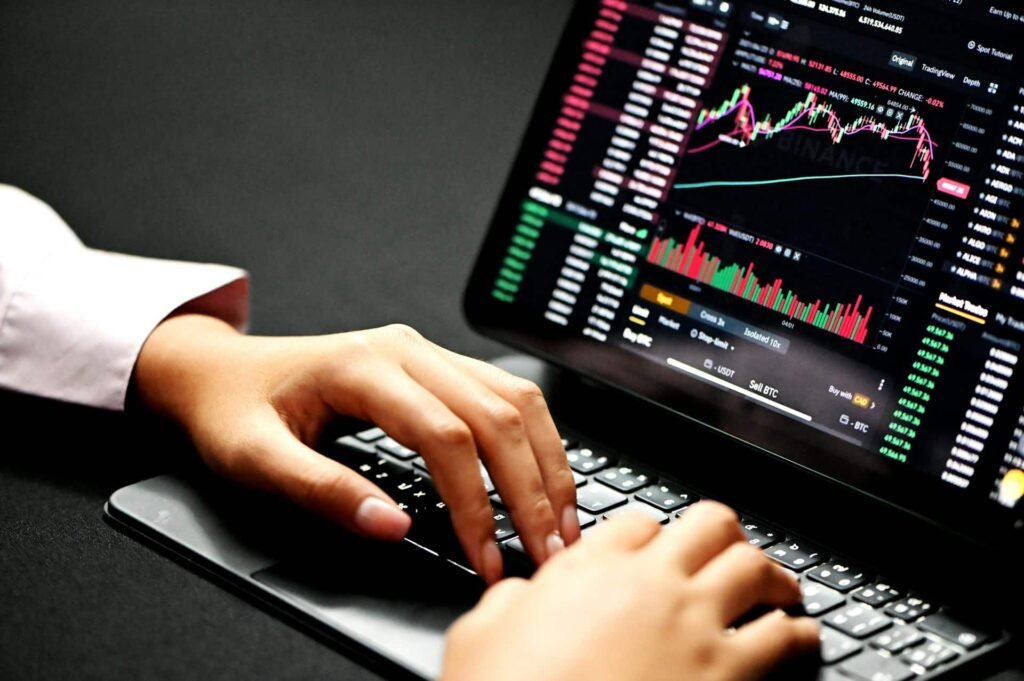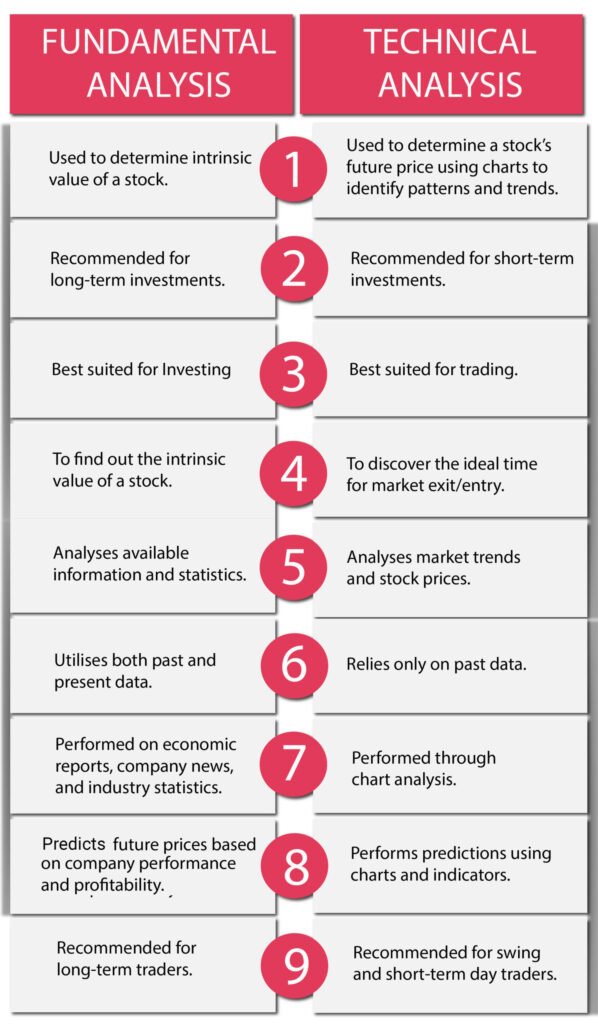Trading Basics: Quick Start Guide 2024. Are you curious about trading but not sure where to start? You’re not alone! Whether it’s stocks, Forex, or even cryptocurrencies, the world of trading can feel like a maze to beginners. But don’t worry – I’m here to break it down in a simple and approachable way so you can kick off your trading journey with confidence.
What is Trading?: Trading Basics: Quick Start Guide 2024
https://www.cpmrevenuegate.com/xcqz5u9d?key=ae1ed4f3f8bd70fa6fea3fc9bac100e4At its heart, trading is buying and selling assets (like stocks or currencies) to make a profit. Sounds simple, right? Well, while the idea is easy to grasp, the execution can be a bit more complex.
Understanding Financial Markets
Financial markets are where all the action happens. Consider them big virtual meeting places where buyers and sellers trade assets. Stock exchanges like the New York Stock Exchange (NYSE) are where stocks are traded, while the Forex market deals with currencies like the US dollar or the euro.
Types of Trading (Stocks, Forex, Crypto, etc.)
There are different types of trading, depending on what you want to trade. Stock trading involves buying shares of companies, while Forex is about trading currency pairs like EUR/USD. Cryptocurrency trading focuses on digital currencies like Bitcoin or Ethereum. Each of these markets has its quirks, and the one you choose depends on what interests you.
Why Should Beginners Consider Trading?
Trading Basics: Quick Start Guide 2024. Trading offers more than just a chance to grow your money. It can also be a flexible and exciting way to engage with the financial world.
Benefits of Trading
You can conduct trades from any location as long as you have access to the internet. This flexibility makes it appealing to many people who want to earn extra money or even make trading their full-time gig. Plus, the possibility of seeing your money grow with smart decisions is a thrill in itself!
Potential Risks to Be Aware Of
But let’s be real: trading isn’t without its risks. Markets can be unpredictable, and even experienced traders lose money sometimes. It’s important to know that you might face losses and to prepare yourself mentally and financially for that.

Basic Trading Terminology
Trading Basics: Quick Start Guide 2024.Before diving into trading, it helps to learn some key terms. Don’t worry, though – you don’t need a finance degree to understand them!
Key Terms Every Trader Should Know
Let’s start with the basics: a “bull market” is when prices are rising, and a “bear market” is when they’re falling. Knowing terms like “bid price” (the price buyers are willing to pay) and “ask price” (the price sellers want) will help you navigate the market.
Market Orders vs. Limit Orders
When you place a trade, you’ll often choose between a market order (buying or selling immediately at the current price) or a limit order (setting a specific price at which you want the trade to happen). Limit orders give you more control, but they might not happen as quickly as market orders.
Different Types of Trading Strategies
https://www.cpmrevenuegate.com/xcqz5u9d?key=ae1ed4f3f8bd70fa6fea3fc9bac100e4There’s more than one way to approach trading, and finding a strategy that works for you is key.
Day Trading vs. Swing Trading
Day traders buy and sell throughout the day, trying to profit from small price changes. Swing traders, on the other hand, hold their trades for days or weeks to capture larger price moves. If you don’t have time to watch the markets all day, swing trading might be a better fit.
Position Trading
Position trading is a long-term approach in which trades are held for several months or even years. This approach is more relaxed and requires less daily attention, making it ideal for people with full-time jobs or other commitments.
Long-Term Investing vs. Active Trading
Long-term investing is all about buying and holding for years, focusing on gradual wealth growth. Active trading is more hands-on and involves buying and selling based on short-term market movements. As a beginner, it’s okay to try both approaches and see what fits your style.

How to Choose a Broker for Beginners
Picking the right broker is a big decision for any trader, especially when you’re just starting.
Key Features to Look for in a Broker
You’ll want a broker that offers low fees, a user-friendly platform, and great customer support. Make sure they also provide access to the markets you’re interested in, whether that’s stocks, Forex, or crypto.
The Importance of Demo Accounts
Most brokers offer demo accounts, which are practice accounts where you can trade with fake money. This is perfect for beginners because you can test the waters without any financial risk.
Getting Started with Your First Trade
Ready to make your first trade? It’s an exciting moment, but it can also feel a bit overwhelming. Let’s walk through the process together.
Setting Up a Trading Account
First, choose a broker and create your account. You’ll need to provide some personal information and usually a form of ID. After that, you’ll fund your account with money you’re willing to trade with.
Making Your First Trade: A Step-by-Step Guide
- Choose the asset you want to trade (for example, shares of Apple).
- Decide whether you think the price will go up or down.
- Execute your trade by selecting either a market or limit order.
- Watch how the trade progresses and decide when to exit based on your strategy.

Risk Management in Trading
Risk management is one of the most important things to learn as a trader. The key is to safeguard yourself from substantial losses.
Understanding Stop-Loss Orders
A stop-loss order automatically closes your trade when the price hits a certain level, preventing further losses. It’s like an emergency brake for your trade – super handy!
Risk-Reward Ratio
Before entering a trade, it’s smart to consider the risk-reward ratio. This means comparing how much you’re risking to how much you stand to gain. A good rule of thumb is to aim for trades where the potential reward is at least twice as high as the risk.
Analyzing the Market: Technical and Fundamental Analysis
https://www.cpmrevenuegate.com/xcqz5u9d?key=ae1ed4f3f8bd70fa6fea3fc9bac100e4To make informed trades, you’ll need to analyze the market. There are two primary methods for achieving this: technical analysis and fundamental analysis.
What is Technical Analysis?
Technical analysis involves looking at charts, patterns, and indicators to predict price movements. Think of it like reading the market’s “body language” to see where it’s likely headed.
What is Fundamental Analysis?
Fundamental analysis, on the other hand, looks at the big picture. You’re analyzing factors like a company’s earnings, the economy, or even political events to gauge the asset’s value.
Using Both Approaches Together
Most successful traders use a mix of both. For example, they might use technical analysis to find the best entry point but base their overall decisions on fundamental trends.

Tools Every Beginner Trader Should Use
https://www.cpmrevenuegate.com/xcqz5u9d?key=ae1ed4f3f8bd70fa6fea3fc9bac100e4Thankfully, many tools can help make your trading life easier.
Trading Platforms
A good trading platform is essential. Some popular ones include MetaTrader and Thinkorswim. They offer everything from basic order placement to advanced charting and analysis tools.
Charts and Indicators
Charts let you see price movements over time, and indicators like Moving Averages or the RSI (Relative Strength Index) help you make sense of those movements. These tools are like your trading compass.
Common Mistakes Beginners Make
Let’s face it, we all make mistakes when we’re new at something. The key is to learn from them!
Overtrading
One of the biggest traps beginners fall into is overtrading. It’s easy to get caught up in the excitement and place too many trades, which can lead to unnecessary losses. Be patient – quality over quantity!
Lack of a Clear Plan
Jumping into trades without a solid plan is another common mistake. It’s akin to embarking on a road trip without a map. Before you trade, make sure you know your strategy, risk tolerance, and exit points.

Developing a Trading Plan
Speaking of plans, every trader needs one.
Why a Plan is Crucial
A trading plan keeps you on track and prevents emotional decisions. It helps you stay disciplined, especially when the market gets wild. Without a plan, it’s easy to get swept up in the highs and lows.
What to Include in Your Trading Plan
Your plan should outline your goals, risk tolerance, the markets you’ll trade, and your strategies for entering and exiting trades. Think of it as your personal trading rulebook.
Emotional Discipline in Trading
Trading isn’t just about numbers – your emotions play a huge role, too.
Controlling Emotions During Market Fluctuations
Markets can move fast, and it’s easy to let fear or greed take over. Learning to stay calm during big market swings is crucial for making smart decisions.
Avoiding the Fear of Missing Out (FOMO)
FOMO is that nagging feeling you get when you see the market skyrocketing and feel like you have to jump in. But rushing into trades because you’re afraid of missing out is usually a recipe for disaster. Patience pays off!
The Importance of Education and Continuous Learning
No one becomes an expert trader overnight. Even seasoned traders are always learning and adapting.
Books, Courses, and Online Resources
There are tons of resources out there to help you learn more about trading. Some great books for beginners include “Trading for a Living” by Dr. Alexander Elder or check out online platforms like Investopedia for free resources.
Staying Updated with Market News
Keeping up with the news is also important, as world events can have a big impact on the markets. Stay in the loop with trusted financial news sources, like Bloomberg or CNBC.
Is Trading Right for You?
Before diving in, ask yourself if trading is the right fit for your lifestyle and financial goals.
Assessing Your Risk Tolerance
Trading comes with risk, so it’s important to know how much risk you’re comfortable with. If losing money keeps you up at night, a more conservative approach like long-term investing might be better for you.
Time Commitment for Trading
Day trading or other active strategies can be time-consuming, requiring you to stay glued to the market for hours If you have a full-time job or other obligations, swing trading or long-term investing could be a more suitable option.
Conclusion: The Path Forward for Beginner Traders
Starting your trading journey is exciting, but it’s important to be patient, learn as you go, and stay disciplined. By building a solid foundation and continuously improving your skills, you can set yourself up for success. Remember, even the most successful traders started right where you are now!
FAQs
What is the best trading platform for beginners?
Platforms like TD Ameritrade’s Thinkorswim or MetaTrader are great for beginners because they offer easy-to-use interfaces and helpful tools like demo accounts.
How much money do I need to start trading?
You can start with as little as $100, but it’s generally better to begin with at least $500 to $1,000 so you have more room to practice and learn.

